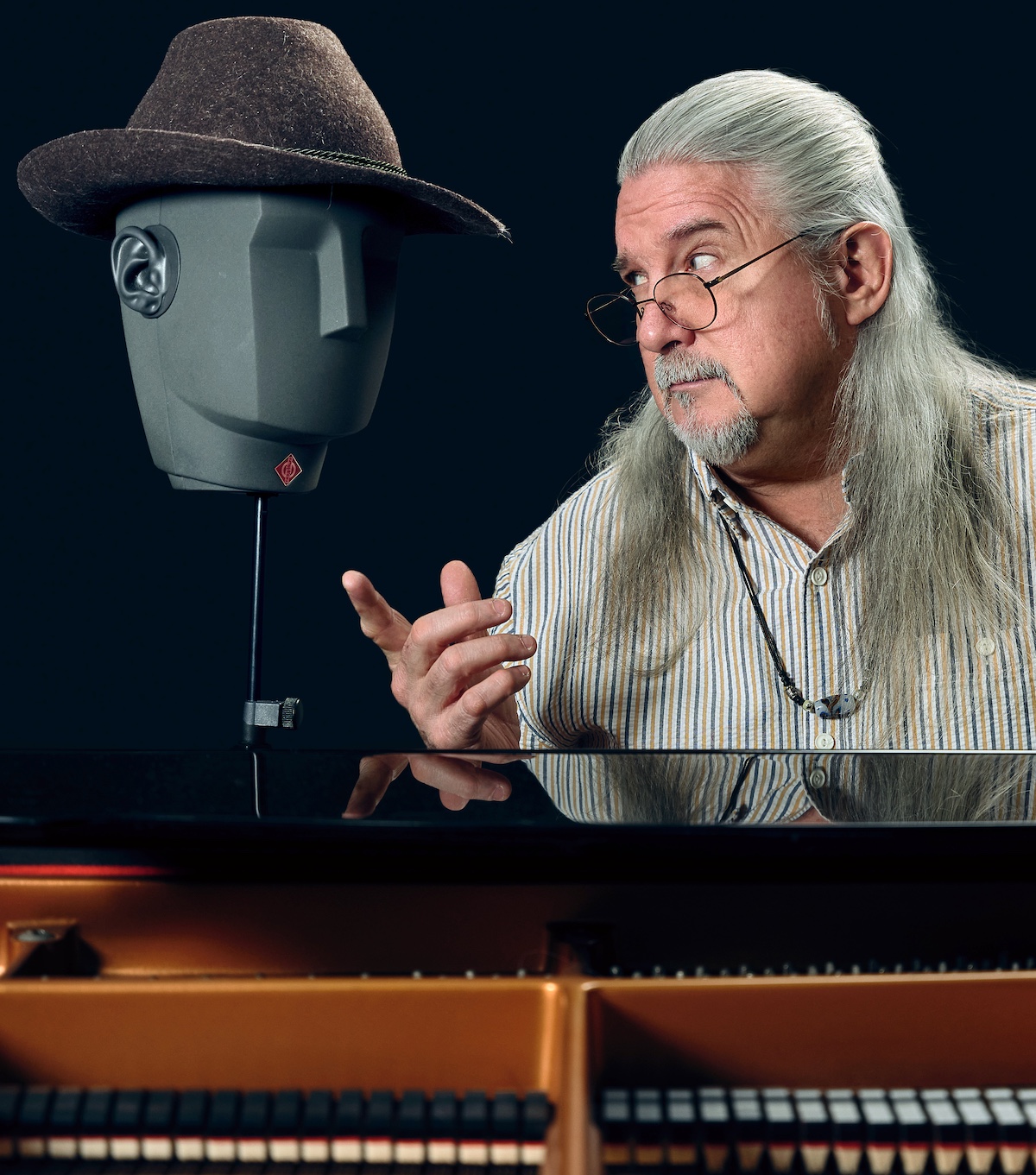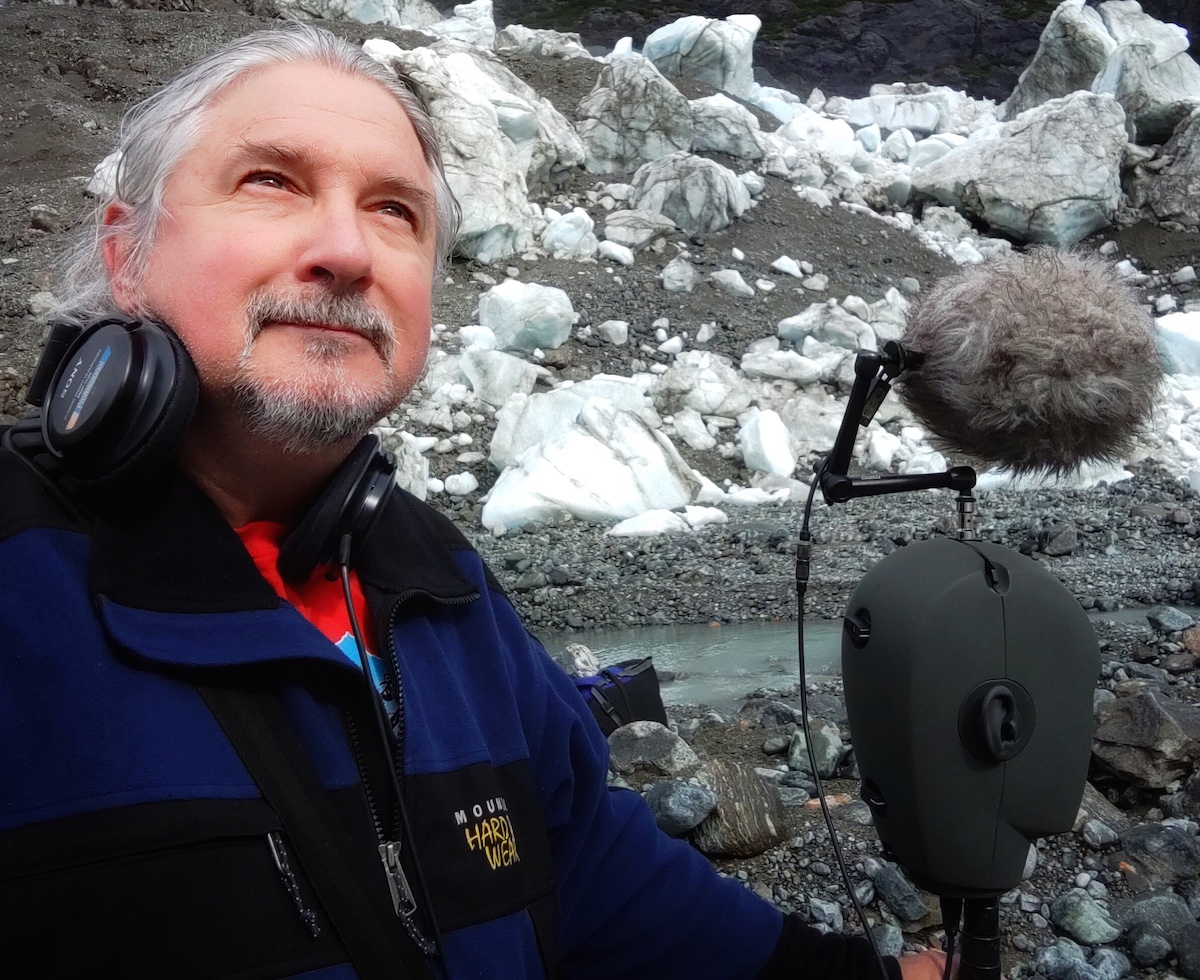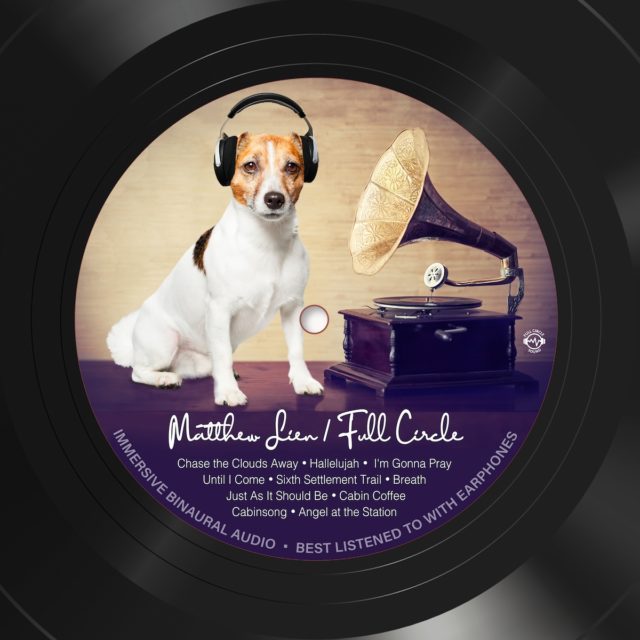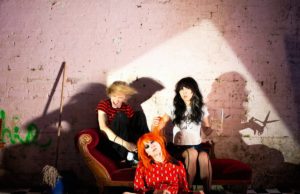Matthew Lien treats you to a 360° spectrum of sound on his immersive new binaural album Full Circle — showcasing today on Tinnitist.
The Yukon musician and producer’s 25th album and his most ambitious to date, Full Circle features Lien’s trademark blend of acoustic styles from folk to pop, all wrapped up in environmental soundscapes and produced in Lien’s new award-winning immersive format developed especially for earphones. “When I first started recording in the 1980s, headphones were rarely used,” Lien says. “But with the proliferation of smartphones, they’re everywhere!”
From his earliest recordings, Lien was interested in expanding the boundaries of how sound is perceived. Many of his productions employed the Roland RSS or Desper Pro-Spatializer systems (used by Sting, Roger Waters and others) to expand the stereo soundfield. In 2005, he received support from the National Research Council to expand the perception of 5.1 surround sound, while working with Sony engineer Lon Neumann at Bryan Adams’ Warehouse Studio.
But his first experience with binaural sound raised the bar. One morning, his recording engineer Michael Harris brought a DIY binaural microphone into the studio. It looked like a beat-up mannequin head with rubbery ears and wires underneath. Harris played a recording of himself walking around the studio while talking and shaking his car keys. “Listening on headphones with my eyes closed, I thought nothing of it because it sounded so realistic, until I opened my eyes and Mike wasn’t in the room,” Lien exclaimed. “I couldn’t believe it had been recorded, and I realized this microphone was essentially a periscope for the ears, able to put someone aurally into any space.”

He purchased the holy grail of binaural microphones — the Neumann KU100 — and started experimenting. The biggest challenge he discovered — and one which had vexed others attempting to use the binaural format for mainstream music production — was reverb. Most studio music is recorded in layers, so that each instrument can be treated uniquely for tone, position, dynamics, and the sense of space it occupies. That space is often defined with effects like artificial reverb, so a singer can sound like they’re in a chapel while their piano can seem to be in a small room, for example.
When artificial reverb is applied to binaural recordings, it causes the immersive quality of the recording to collapse. So Lien started experimenting with another type of reverb called convolution reverb. This involved recording a special tone within an acoustically pleasing space and using the binaural microphone to capture a digital fingerprint of the space (called an impulse response). This led to his breakthrough.
He then travelled Canada, Europe and southeast Asia to capture impulse responses in historically significant spaces like St. Martin’s Church, is the oldest Christian church in the English-speaking world — which, he realized, would impart immersive spatial qualities onto the instruments while also contributing cultural qualities to his songs. “I’d become an acoustic archaeologist,” Lien observes.
While most songs on Full Circle are personal compositions from Lien’s life and travels, the album has two covers recorded as tributes to those he’s lost. Leonard Cohen’s Hallelujah was re-imagined by Lien for his father, who passed away while Lien was in the studio. “He often requested k.d. lang’s version in the hospital,” Lien said. “I promised to develop my take on the song, but he passed away before he could hear it.”
The other tribute is for his friend and the bassist on many of Lien’s albums and tours, Paul Stephens. “When Paul received a tragic diagnosis with only months to live, I called him and asked if he wanted to record one last song,” Lien recalls. I’m Gonna Pray was composed by Paul Gatien and Leah DeForrest, close friends of Lien and Stephens. The recording became an international undertaking involving 18 musicians in six studios with seven engineers in the Yukon, B.C. and California. The day after the final mixing session, Stephens and his wife Maureen returned home to Canada, where he passed away days later. “The project served as a beautiful way for many friends to say goodbye, and it filled Paul’s final months with what he loved most in life,” Lien said.
Overall, Full Circle was curated from 40 years of songwriting, and recorded in six countries and 18 locations, with 52 musicians, eight engineers and four foley artists; and with binaural impulse responses captured in 22 chapels, cathedrals, caves and caverns across North America, Europe and Asia.
The album was mastered by Grammy-winning engineer Michael Romanowski. “When I heard of Michael and his award-winning work on immersive projects, I asked if he thought he could improve on the music, a challenge he thankfully accepted and he’s elevated the immersive quality significantly,” Lien said.
LIsten to Full Circle below, watch the video for Chase The Clouds Away above, and find Matthew Lien on his website, Facebook and Instagram.









































